1. Dropsy
Dropsy is a common condition in fish that can be caused by bacterial infection, poor water quality, and stress. The symptoms of dropsy include swelling or bloating of the fish’s body, pinecone-like protrusions on scales due to fluid retention, loss of appetite, lethargy and decreased activity levels, pale gills, and rapid breathing or gasping at the water surface.
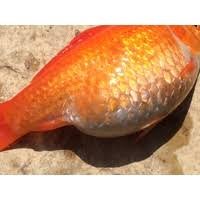
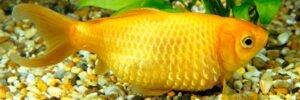
To treat dropsy, it’s important to isolate the affected fish to prevent the spread of infection, improve water quality through regular water changes and filtration, and administer antibiotics to treat the bacterial infection. Common antibiotics include Kanamycin, Erythromycin, or Tetracycline. Additionally, providing supportive care such as maintaining optimal water temperature and adding aquarium salt to reduce osmotic stress, offering medicated food if the fish is still eating, and considering using natural remedies like garlic or herbal extracts can be helpful.
To prevent dropsy, you should maintain good water quality by regularly testing and monitoring parameters such as pH, ammonia, nitrite, and nitrate levels, avoid overfeeding and ensure a balanced diet appropriate for the species, quarantine new fish before introducing them to an established aquarium, provide adequate space and hiding places to reduce stress, and perform regular aquarium maintenance, including cleaning substrate and equipment.

Remember, while these measures can help treat dropsy, the prognosis may vary depending on the severity of the condition and how early it’s detected. It’s always best to seek advice from a veterinarian or aquatic specialist for proper diagnosis and treatment tailored to your fish’s specific needs.
2. Fish pop-eye
Fish Pop-eye is a condition where a fish’s eyes protrude from its head. It can affect one or both eyes, and the severity may vary from mild to severe. Symptoms of Fish Pop-eye include bulging or protruding eyes, cloudiness or redness in the affected eye, swelling or inflammation around the eye, and behavioral changes such as reduced activity or appetite loss.
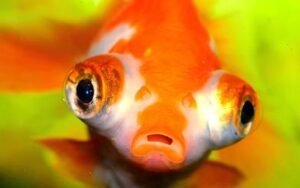
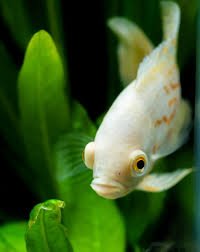
There are several causes of Fish Pop-eye, including bacterial or fungal infections, physical trauma to the eye or head, poor water quality, parasitic infections, and nutritional deficiencies. Treatment for Fish Pop-eye involves isolating the affected fish to prevent the spread of infection or injury, ensuring optimal water quality, treating bacterial or fungal infections with appropriate medication, providing Epsom salt baths to reduce swelling, offering a balanced diet rich in essential nutrients, identifying and addressing underlying issues, and consulting a veterinarian or aquatic specialist if the condition persists or worsens.

Preventive measures include maintaining excellent water quality, quarantining new fish before introducing them to an established aquarium, avoiding overstocking, providing adequate space for fish to reduce stress and aggression, feeding a varied and balanced diet, and monitoring fish behavior and appearance regularly for any signs of illness or distress.
Remember, early detection and prompt treatment are essential for successfully managing fish pop-eye and other health issues in aquarium fish. If you’re unsure about the best course of action, seek advice from a qualified aquatic professional or veterinarian.
3. Fin rot
Fin rot is a bacterial infection that commonly affects the fins and tails of fish. If left untreated, it can cause the deterioration and erosion of fin tissue. The symptoms of fin rot include fuzzy or ragged edges on the fins or tail, discoloration of affected fins (including white, red, or black patches), fraying or splitting of fin rays, and in severe cases, shortening or complete erosion of the fin. Behavioural changes such as lethargy or decreased appetite may also be observed in infected fish. Fin rot can be caused by bacterial infections, poor water quality, physical injury or damage to the fins, or stress from overcrowding, aggressive tankmates, or sudden environmental changes.
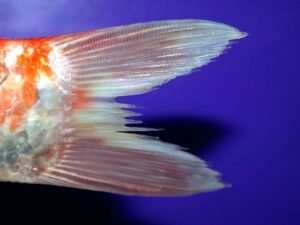
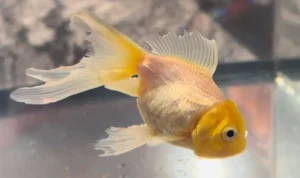
Treatment for fin rot includes isolating the affected fish to prevent the spread of infection, improving water quality through regular water changes and proper filtration, treating bacterial infections with appropriate antibiotics, using salt baths as supportive treatment (with caution), providing optimal conditions for wound healing, and ensuring the fish receives a balanced diet rich in essential nutrients. Close monitoring of the fish’s progress is important during treatment, and adjustments to treatment protocols or veterinary assistance may be required if the condition worsens or does not improve.

Preventive measures for fin rot include maintaining excellent water quality, quarantining new fish before introducing them to an established aquarium, providing adequate space and hiding places to reduce stress and aggression, avoiding overstocking, handling fish carefully to minimize the risk of physical injury, and feeding a varied and balanced diet to meet the nutritional needs of your fish.
By addressing the underlying causes and providing appropriate treatment, fin rot can often be successfully managed, leading to the restoration of the fish’s fins and overall health. If you’re unsure about the best course of action, it’s advisable to consult with a veterinarian or aquatic specialist for guidance tailored to your specific situation.
4. Cloudy eye
Cloudy eye is a common health issue in goldfish, characterized by a hazy or opaque appearance of one or both eyes. Symptoms of cloudy eye include cloudiness or haziness in one or both eyes, loss of clarity or transparency in the affected eye(s), redness or inflammation around the eyes, behavioral changes such as rubbing or scratching the eyes against objects in the aquarium, and decreased activity levels or appetite, particularly if accompanied by other health issues. Cloudy eye can have several causes, including bacterial or fungal infections affecting the eyes, poor water quality, physical trauma or injury to the eye, environmental stressors, and nutritional deficiencies or poor diet.

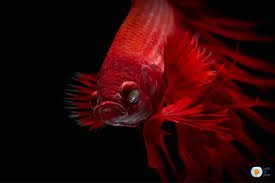
To treat cloudy eye, it’s recommended to isolate the affected fish to prevent the spread of infection and provide a more controlled treatment environment, improve water quality through regular water changes, proper filtration, and monitoring of water parameters, treat bacterial or fungal infections with appropriate medications, provide optimal conditions for healing, and provide appropriate wound care to promote healing if the cloudy eye is due to physical injury. It’s essential to monitor the fish’s progress closely during treatment and adjust treatment protocols or seek veterinary assistance if the condition does not improve or worsens.

Preventive measures include maintaining excellent water quality through regular maintenance and monitoring, quarantining new fish before introducing them to an established aquarium to prevent the spread of diseases, providing adequate space and hiding places to reduce stress and aggression, handling fish carefully to minimize the risk of physical injury, feeding a varied and balanced diet to meet the nutritional needs of fish, and avoiding overstocking and maintaining appropriate stocking densities.
By addressing the underlying causes and providing appropriate treatment, cloudy eye in goldfish can often be successfully managed, leading to the restoration of clear and healthy eyes. If you’re unsure about the best course of action, consult with a veterinarian or aquatic specialist for guidance tailored to your specific situation.
5. White Spot Disease
White Spot Disease (Ichthyophthiriusmultifiliis) is a common and widespread parasitic infection that affects freshwater fish. The disease is caused by a protozoan parasite called Ichthyophthiriusmultifiliis and can be highly contagious and potentially fatal if left untreated. Symptoms of White Spot Disease include white, salt-like spots resembling grains of salt on the fish’s body, fins, and gills. Fish may exhibit flashing behavior, which is rapidly rubbing against objects in the aquarium, in an attempt to alleviate irritation. Other symptoms include rapid or labored breathing, clamped fins, lethargy, loss of appetite, and, in severe cases, skin lesions or ulcers.

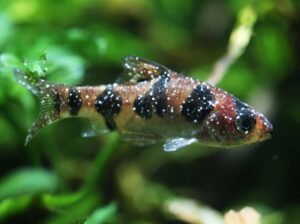
The primary cause of white spot disease is the parasite Ichthyophthiriusmultifiliis. The parasites are often introduced into aquariums via contaminated water, live food, or new fish. Stressors such as poor water quality, overcrowding, or sudden environmental changes can weaken fish’s immune systems, making them more susceptible to infections.
To treat white spot disease, you can gradually raise the aquarium temperature to around 82-86°F (28-30°C) to accelerate the life cycle of the Ich parasite, making it more vulnerable to treatment. You can also use an appropriate anti-parasitic medication containing ingredients such as malachite green, formalin, or copper sulfate. Be sure to follow the medication’s instructions carefully as some treatments can be harmful to certain fish species or sensitive to the aquarium’s biological filtration. Additionally, some aquarists use salt as a supportive treatment for ich.
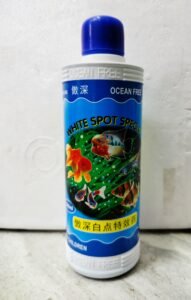
However, salt treatment may not be suitable for all fish species and should be used with caution. To prevent white spot disease, you can quarantine new fish before introducing them to an established aquarium, avoid overstocking, and maintain excellent water quality through regular maintenance and monitoring of water parameters. You should also avoid introducing contaminated water or live food into the aquarium and handle fish and aquarium equipment carefully to minimize stress and potential transmission of diseases.
By promptly addressing white spot disease and implementing appropriate treatment measures, it’s possible to control and eliminate the parasite, restoring the health of affected fish and preventing further spread within the aquarium. If you’re uncertain about the best course of action, seek advice from a veterinarian or aquatic specialist for guidance tailored to your specific situation.
6. Fish Velvet Disease
Fish Velvet Disease, also known as Oodinium or Gold Dust Disease, is a parasitic infection caused by the protozoan parasite Oodiniumocellatum. It primarily affects freshwater and saltwater fish, including goldfish. Symptoms of Fish Velvet Disease include excessive mucus or slime coating on the fish’s body, giving it a velvety or dusty appearance, rapid gill movement or gasping for air at the water surface, flashing behavior due to irritation, loss of appetite and weight loss, lethargy and hiding behavior, pale or faded coloration, and white or gray patches on the skin, particularly in the gills and fins.
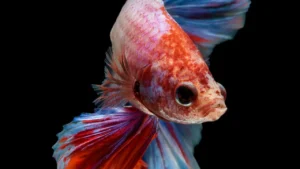
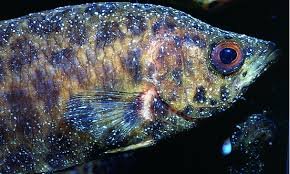
The primary cause of Fish Velvet Disease is the parasite Oodiniumocellatum. Stressors such as poor water quality, sudden changes in temperature or pH, overcrowding, or transport stress can weaken the fish’s immune system and make them more susceptible to infections. Introduction of contaminated water, live food, or new fish carrying the parasite into the aquarium can also cause the disease.
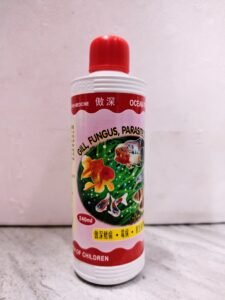
Treatment for Fish Velvet Disease includes medication with an appropriate anti-parasitic medication, increased temperature to around 82-86°F (28-30°C), salt treatment, regular water changes, and quarantine of infected fish. Preventive measures include quarantining new fish, maintaining excellent water quality, avoiding overstocking, avoiding introducing contaminated water, live food, or new fish into the aquarium, and handling fish and aquarium equipment carefully to minimize stress and potential transmission of diseases.
By promptly addressing Fish Velvet Disease and implementing appropriate treatment measures, it’s possible to control and eliminate the parasite, restoring the health of affected fish and preventing further spread within the aquarium. If you’re uncertain about the best course of action, seek advice from a veterinarian or aquatic specialist for guidance tailored to your specific situation.
7. Fish Anchor Worm
Fish Anchor Worm (Lernaea): Anchor worms, also known as Lernaea, are parasitic crustaceans that attach themselves to the skin, fins, or gills of freshwater and saltwater fish, including goldfish.
These parasites can cause skin irritation, inflammation, and secondary infections if not treated on time.
Symptoms of Fish Anchor Worm:
- Visible worm-like parasites attached to the fish’s skin, fins, or gills. These parasites have a characteristic anchor-shaped head that burrows into the host’s tissue.
- Redness, swelling, or ulceration at the attachment site.
- Excessive mucus or slime production.
- Flashing behavior (rapidly rubbing against objects in the aquarium) due to irritation.
- Lethargy and loss of appetite.
- Behavioral changes such as increased hiding or reduced activity. Causes of Fish Anchor Worm:


- Anchor worms (Lernaea) are the primary cause of fish anchor worm infestations.
- Introduction of contaminated water, live food, or new fish carrying the parasite into the aquarium.
- Stressors such as poor water quality, overcrowding, or transport stress can weaken the fish’s immune system and make them more susceptible to infections.
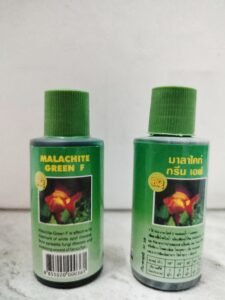

Treatment for Fish Anchor Worm:
- Manual Removal: Carefully remove visible anchor worms from the fish using fine-tipped tweezers or forceps. Be gentle to avoid injuring the fish further. Ensure that you remove the entire worm, including its anchor-like head, to prevent re-infestation.
- Medication: Treat with an appropriate anti-parasitic medication. Common medications include those containing ingredients such as potassium permanganate, formalin, or praziquantel. Follow the instructions on the medication carefully, as some treatments can be harmful to certain fish species or sensitive to the aquarium’s biological filtration.
- Salt Treatment: Some aquarists use salt as a supportive treatment for fish anchor worm infestations.
Non-iodized aquarium salt can be added to the aquarium at a concentration of 1-3 teaspoons per gallon (5-15 grams per 4 liters) as an additional measure to help control the parasites. However, salt treatment may not be suitable for all fish species and should be used with caution.
- Quarantine: Infected fish should be quarantined to prevent the spread of the parasites to other tankmates.
- Maintain Water Quality: Regular water changes and maintenance are essential to reduce stress on the fish and promote healing.
Preventive Measures:
- Quarantine new fish before introducing them to an established aquarium.
- Maintain excellent water quality through regular maintenance and monitoring of water parameters.
- Avoid overstocking and maintain appropriate stocking densities.
- Avoid introducing contaminated water, live food, or new fish into the aquarium.
- Handle fish and aquarium equipment carefully to minimize stress and potential transmission of diseases.
By promptly addressing fish anchor worm infestations and implementing appropriate treatment measures, it’s possible to control and eliminate the parasites, restoring the health of affected fish and preventing further spread within the aquarium. If you’re uncertain about the best course of action, seek advice from a veterinarian or aquatic specialist for guidance tailored to your specific situation.
8. Gyrodactylus and Dactylogyrus
Gyrodactylus and Dactylogyrus are two types of parasitic monogeneans that often affect freshwater fish, including goldfish. These parasites can cause various health issues and are commonly called skin or gill flukes.
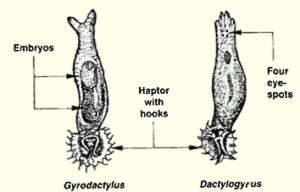
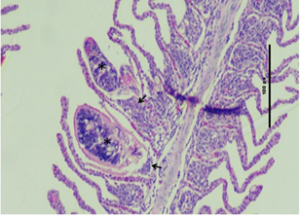
Symptoms of Gyrodactylus and Dactylogyrus infections include excessive mucus production on the skin or gills, flashing behavior (rapidly rubbing against objects in the aquarium) due to irritation, respiratory distress, clamped fins, lethargy, reduced activity levels, skin and gill irritation, inflammation, redness, loss of appetite, and weight loss. Poor water quality, the introduction of infected fish, plants, or equipment, overcrowding, aggressive tankmates or inadequate tank conditions, and the presence of intermediate hosts in the aquarium environment, such as snails or other aquatic invertebrates, can all lead to Gyrodactylus and Dactylogyrus infections.

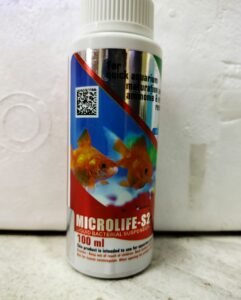
Treatment options include medication with an appropriate anti-parasitic medication, gradual increase of the aquarium temperature to around 82-86°F (28-30°C), regular water changes and maintenance, quarantining infected fish, and the removal of intermediate hosts from the aquarium. Preventive measures include quarantining new fish and plants before introducing them to an established aquarium, maintaining excellent water quality through regular maintenance and monitoring of water parameters, avoiding overstocking and maintaining appropriate stocking densities, avoiding introducing contaminated water, live food, or new fish into the aquarium, practicing good hygiene and disinfection procedures for aquarium equipment, and monitoring fish behavior and appearance regularly for any signs of illness or distress.
Promptly addressing Gyrodactylus and Dactylogyrus infections and implementing appropriate treatment measures can help control and eliminate the parasites, restoring the health of affected fish and preventing further spread within the aquarium. Seek advice from a veterinarian or aquatic specialist if you’re uncertain about the best course of action for your specific situation.
9. Costia
Costia (Ichthyobodonecator): Costia is a type of single-celled parasite that belongs to the group of protozoans. It is commonly found in freshwater fish, including goldfish, and can cause significant health issues if left untreated.
Symptoms of Costia:
- Excessive mucus or slime production on the skin, fins, and gills.
- Flashing behavior (rapidly rubbing against objects in the aquarium) due to irritation.
- Respiratory distress, including rapid or labored breathing.
- Clamped fins.
- Lethargy and reduced activity levels.
- Skin and gill irritation, leading to inflammation and redness.
- Loss of appetite and weight loss.
- White or gray patches on the skin or fins.
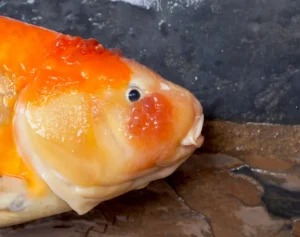
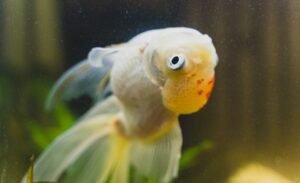
Causes of Costia:
- Poor water quality, including high levels of ammonia, nitrite, or organic waste, can stress fish and make them more susceptible to parasite infections.
- Introduction of infected fish, plants, or equipment into the aquarium.
- Overcrowding and stress from aggressive tankmates or inadequate tank conditions.
- Weakened immune system due to stress, poor nutrition, or other underlying health issues.

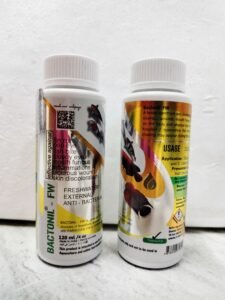
Treatment for Costia:
- Medication: Use an appropriate anti-parasitic medication. Common treatments include those containing ingredients such as formalin, potassium permanganate, or copper sulfate. Follow the instructions on the medication carefully and consider consulting a veterinarian or aquatic specialist for guidance.
- Increased Temperature: Gradually raise the aquarium temperature to around 82-86°F (28-30°C). Higher temperatures can accelerate the life cycle of the parasites, making them more vulnerable to treatment.
- Maintain Water Quality: Regular water changes and maintenance are essential to reduce stress on the fish and promote healing.
- Quarantine: Infected fish should be isolated to prevent the spread of the parasites to other tankmates. 5. Improve Nutrition: Provide a balanced diet rich in essential nutrients to support the fish’s immune system and overall health.
Preventive Measures:
- Quarantine new fish and plants before introducing them to an established aquarium.
- Maintain excellent water quality through regular maintenance and monitoring of water parameters.
- Avoid overstocking and maintain appropriate stocking densities.
- Avoid introducing contaminated water, live food, or new fish into the aquarium.
- Practice good hygiene and disinfection procedures for aquarium equipment to prevent cross-contamination.
- Monitor fish behavior and appearance regularly for any signs of illness or distress, and address issues promptly.
By promptly addressing Costia infections and implementing appropriate treatment measures, it’s possible to control and eliminate the parasites, restoring the health of affected fish and preventing further spread within the aquarium. If you’re uncertain about the best course of action, seek advice from a veterinarian or aquatic specialist for guidance tailored to your specific situation.
10. Hypoxia
Hypoxia is a condition that occurs when there is a lack of oxygen reaching the tissues of an organism. In the case of aquarium fish, hypoxia can be caused by insufficient dissolved oxygen levels in the water.
Symptoms of hypoxia may include rapid or labored breathing, gasping at the water surface, lethargy and reduced activity levels, loss of appetite, and cyanosis. Cyanosis refers to a bluish or purplish discoloration that may appear in the gills or other areas of the fish in severe cases of oxygen deprivation.
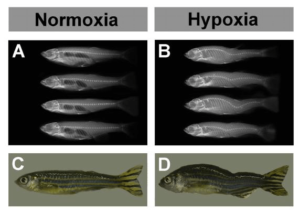
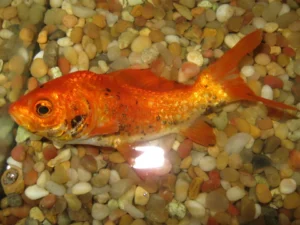
The causes of hypoxia in aquarium fish may include poor water circulation, overstocking, temperature fluctuations, decomposition of organic matter, and inadequate aeration or filtration.
Treatment for hypoxia may involve increasing aeration and water circulation, performing partial water changes, reducing stocking density, regulating water temperature, and removing decaying matter from the aquarium.
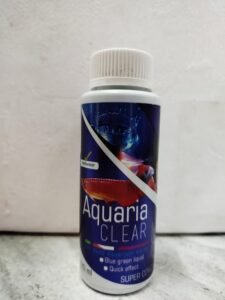
Preventive measures to avoid hypoxia in aquarium fish may include properly sizing and maintaining filtration and aeration equipment, avoiding overstocking, monitoring water parameters regularly, performing regular water changes and substrate cleaning, and providing a well-balanced diet while avoiding overfeeding.
By addressing the underlying causes of hypoxia and taking appropriate treatment and preventive measures, aquarium fish can be kept healthy and stress-free while maintaining optimal water quality. If you are unsure about the best course of action, it is always advisable to consult with a veterinarian or aquatic specialist for guidance tailored to your specific situation.
11. Fish fungus
Fish fungus, also known as columnaris or cotton wool disease, is a common bacterial infection caused by Flavobacterium columnare. This disease primarily affects freshwater fish, particularly those living in aquariums or fish farms.
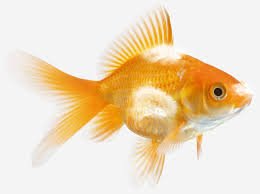
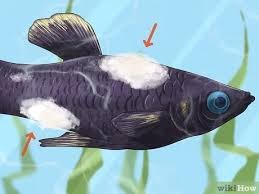
Columnaris can be triggered by various factors, including poor water quality, stress, overcrowding, and injuries. Some symptoms of fish fungus include white or gray patches on the skin, fins, or gills, lethargy and loss of appetite, reddening or inflammation around the affected areas, rapid breathing, gasping for air, and ulcers or lesions on the body.
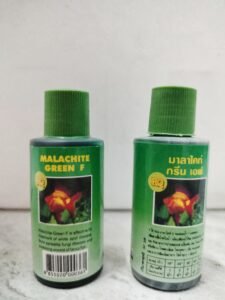

Treatment for fish fungus typically involves both environmental management and medication. Here are some steps to address the issue:
- Quarantine Affected Fish: Remove any infected fish from the main tank to prevent the spread of the disease to healthy fish.
- Improve Water Quality: Ensure proper filtration and regular water changes to maintain optimal water parameters. Clean water helps reduce stress on the fish and prevents the proliferation of bacteria.
- Raise Water Temperature: Increasing the water temperature slightly (within safe limits for your fish species) can help to speed up the fish’s immune response and inhibit bacterial growth.
- Medication: Various medications are available for treating fish fungus, such as antibiotics and antifungal agents. These can be administered orally, added to the water, or applied topically, depending on the severity of the infection and the affected fish species. It’s essential to follow the instructions provided with the medication carefully.
- Salt Bath: Some aquarists use salt baths as a natural remedy for treating fish fungus. However, it’s crucial to use the correct type and concentration of salt, as some fish species are sensitive to salt.
- Isolate and Treat Affected Areas: If possible, isolate the affected areas of the fish and apply topical treatments directly to the lesions or ulcers. This can help expedite the healing process. 7. Monitor and Adjust: Continuously monitor the infected fish and the overall tank conditions. Adjust treatment as necessary and be patient, as it may take some time for the fish to recover fully.
Prevention is key to avoiding fish fungus in the future. Maintain good tank hygiene, provide proper nutrition, avoid overcrowding, and minimize stressors to keep your fish healthy and resilient against diseases. Regular observation of your fish for any signs of illness can also help detect and address issues early on.
Some facts to remember
Missing or damage eyes:
Damage due to mishandling or a sharp object in the tank(avoid any sharp decoration, especially with fragile varieties like telescope goldfish).
Or by fish bullying
Sick fish:
Diseases are often an indicator of an imbalance in the fish tank. It is therefore recommended to test your water when you suspect a problem. This includes checking the ammonia and nitrite levels (should normally be at 0 ppm (parts per million). Water changes and maintenance are important, as an infection is much more likely if tank hygiene is poor. Other factors contributing to fish disease are: poor transport conditions or acclimatization, overcrowding.
Relavent post
Disease and Solution
1. Dropsy Dropsy is a common condition in fish that can be caused by bacterial…
February 20, 2024
Planted Setup
Get Started Essentials
Interested in keeping planted aquariums, but not sure where to start? Many planted tank enthusiasts…
February 12, 2024 0



